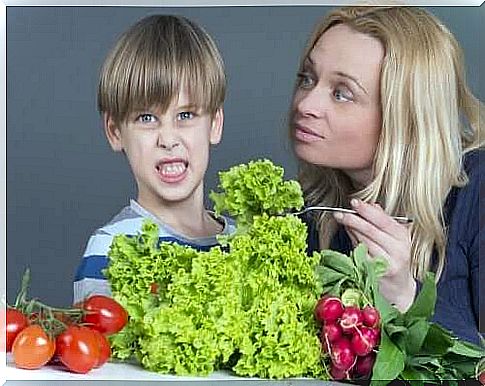My Child Doesn’t Like Vegetables: What To Do?

According to several studies, vegetables are the food group least loved by children. However, children who do not like this food group end up consuming less healthy options. That’s why we’re going to give you a series of tips to let you know what to do if your child doesn’t like vegetables.
The importance of vegetables for children
Vegetables are an essential source of many vitamins (A, C and B9), minerals (magnesium, potassium, calcium, sodium and iron), fiber and antioxidant compounds, essential in the diet of both children and adults.
For children, the intake of fruits, vegetables and vegetables will be essential not only to ensure an optimal nutritional status, but also to determine the healthy habits that will be maintained throughout adulthood, to help prevent nutritional deficiencies and to prevent disease , which can appear both in the short and in the long term, such as atherosclerosis, irritable bowel, diverticulitis, anemia, osteoporosis, cancer, etc.
How to make our children eat vegetables?
Introduce the vegetables as quickly as possible
It is important to know that the flavors to which the child is exposed in the first few months of life are better accepted than if the exposure occurs in late childhood.
Between 5 and 6 months of the baby’s life, we can start to include vegetables (carrots, green beans and potatoes). At this stage, they must be cooked and crushed.

Around the eighth month, we can introduce tomatoes (always cooked and without skin or seeds). From 10 to 12 months, we can already give cooked vegetables without crushing. From 12 to 18 months, we can include raw salads, but avoid those that cause the most flatulence, such as the cabbage and artichoke family.
Try it several times if your child doesn’t like vegetables
It is normal that, at first, they can be rejected, but we must introduce them little by little and never force, challenge or punish so that a psychological rejection of vegetables is not created, nor a bad association between flavor and food.
present attractive dishes
A study carried out in 2012 found that children prefer dishes made with many ingredients and colors and that, in addition, they also form a figure with its elements.
Some ideas would be to draw pictures on the puree, make animals or figures out of vegetables, such as a smiling face made from various vegetables, or even create a forest with broccoli.
Offer several options if the child doesn’t like vegetables
If your child does not like vegetables, it is recommended that he can choose from several options, instead of offering a single alternative, as this way the child will also participate and consume them more easily.
In addition, you will also get to know your child’s tastes better. Another recommendation is to take him shopping so that he can choose the vegetables he prefers.
Children can also cook
In general, involving children in the meal preparation process helps to reduce aversive behavior towards food.
It is possible to prepare simple dishes such as salads. In this case, children can, for example, chop the lettuce with their hands or add original ingredients. Or, they can heat the meal in the microwave.

The whole family must eat vegetables
Children often copy what they see from their parents. Therefore, it is important that the family consumes vegetables, that they are always available in the fridge so that the child can see them and that the whole family eat the same vegetables so that they feel important eating the same thing. than adults.
Disguise the vegetables if you don’t like them
Children often enjoy a range of dishes, such as noodles, croquettes, omelets, pizzas, etc., in which vegetables can be easily hidden. Another option could be mixing with healthy sauces.
Some forms of preparation will certainly be more successful than others. For example, cauliflower or broccoli with cheese au gratin instead of a simple baked broccoli.
Other ideas are to make skewers or cut in the shape of a stick, prepare as a tempura and offer them in paper boxes, as if they were French fries. Make a fun meal of raw vegetable sticks to dip in hummus or cheese fondue.








